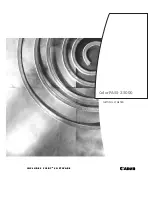
3. Remove or disconnect the following devices, one at a time, until you find the failure. Power on and
configure the server each time you remove or disconnect a device.
• Any external devices,
• Surge-suppressor device (on the server).
• Printer, mouse, and non-Lenovo devices,
• Each adapter.
• Hard disk drives.
• Memory modules until you reach the minimum configuration that is supported for the server.
Note:
For troubleshooting purposes only, the server can be started with one processor, one 16 GB
DIMM, no hard drives, and a single power supply with an input power cable.
This is not a supported
operational configuration.
to determine the minimum configuration for your server.
4. Power on the server.
If the problem is solved when you remove an adapter from the server, but the problem recurs when you
install the same adapter again, suspect the adapter. If the problem recurs when you replace the adapter with
a different one, try a different PCIe slot.
If the problem appears to be a networking problem and the server passes all system tests, suspect a network
cabling problem that is external to the server.
Resolving suspected power problems
Power problems can be difficult to solve. For example, a short circuit can exist anywhere on any of the power
distribution buses. Usually, a short circuit will cause the power subsystem to shut down because of an
overcurrent condition.
Complete the following steps to diagnose and resolve a suspected power problem.
Step 1. Check the event log and resolve any errors related to the power.
Note:
Start with the event log of the application that is managing the server. For more information
about event logs, see “Event logs” on page 243
Step 2. Check for short circuits, for example, if a loose screw is lying on a circuit board.
Step 3. Remove the adapters and disconnect the cables and power cords to all internal and external
devices until the server is at the minimum configuration that is required for the server to start.
Note:
to determine the minimum configuration for your server.
Step 4. Reconnect all ac power cords and turn on the server. If the server starts successfully, reseat the
adapters and devices one at a time until the problem is isolated.
If the server does not start from the minimum configuration, see “Power supply LEDs” on page 247 to
replace the components in the minimum configuration one at a time until the problem is isolated.
Resolving suspected Ethernet controller problems
The method that you use to test the Ethernet controller depends on which operating system you are using.
See the operating-system documentation for information about Ethernet controllers, and see the Ethernet
controller device-driver readme file.
Complete the following steps to attempt to resolve suspected problems with the Ethernet controller.
Step 1. Make sure that the correct device drivers, which come with the server are installed and that they
are at the latest level.
250
User Guide for ThinkAgile VX7820 Appliance, ThinkAgile VX 4-Socket 4U Certified Node
Содержание ThinkAgile VX 4-Socket 4U Certified Node
Страница 6: ...iv User Guide for ThinkAgile VX7820 Appliance ThinkAgile VX 4 Socket 4U Certified Node ...
Страница 10: ...viii User Guide for ThinkAgile VX7820 Appliance ThinkAgile VX 4 Socket 4U Certified Node ...
Страница 69: ...Chapter 2 Server components 59 ...
Страница 76: ...66 User Guide for ThinkAgile VX7820 Appliance ThinkAgile VX 4 Socket 4U Certified Node ...
Страница 96: ...86 User Guide for ThinkAgile VX7820 Appliance ThinkAgile VX 4 Socket 4U Certified Node ...
Страница 252: ...242 User Guide for ThinkAgile VX7820 Appliance ThinkAgile VX 4 Socket 4U Certified Node ...
Страница 276: ...266 User Guide for ThinkAgile VX7820 Appliance ThinkAgile VX 4 Socket 4U Certified Node ...
Страница 284: ...274 User Guide for ThinkAgile VX7820 Appliance ThinkAgile VX 4 Socket 4U Certified Node ...
Страница 295: ......
Страница 296: ......
















































